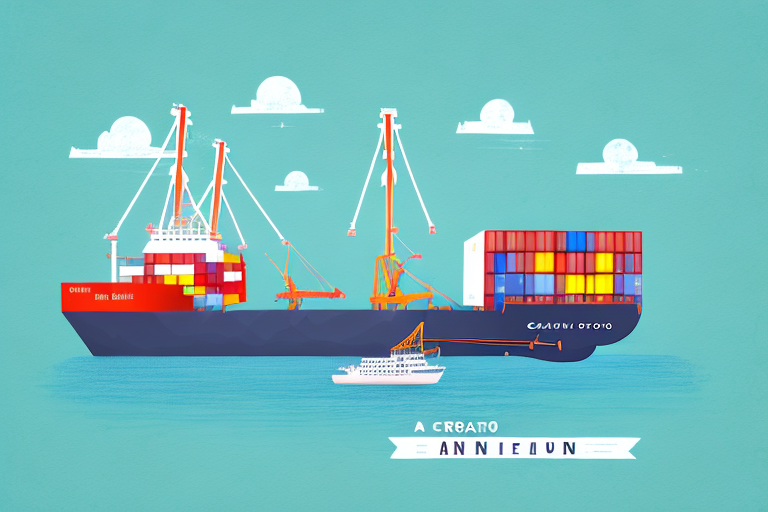Introduction to CWT in Shipping
In the shipping industry, understanding different units of measurement is crucial for efficient logistics and cost management. One such unit is CWT, an abbreviation for centum weight. This comprehensive guide explores the intricacies of CWT in shipping, its historical significance, role in international trade, calculation methods, common misconceptions, factors influencing rates, comparisons with other measurement units, impacts on shipping costs, and best practices for implementation.
What Is CWT?
CWT stands for "centum weight," representing a unit of weight equal to 100 pounds. It is widely used in the shipping industry to measure freight, particularly for bulk commodities. CWT provides a standardized method for calculating shipping costs, facilitating smoother transactions between shippers and carriers.
History and Evolution of CWT
Origins of CWT
The concept of CWT dates back to the Roman Empire, where it was known as "centum pondus," meaning "a hundred pounds." This unit was a staple in trade and commerce for centuries, establishing a foundation for standard weight measurements.
Adoption in the Shipping Industry
During the 19th century, the advent of steamships necessitated standardized measurement units for cargo exchange. By the early 20th century, CWT had become the predominant unit of weight in the shipping sector, a trend that has persisted despite global shifts towards the metric system.
Global Transition to the Metric System
While many countries, including Australia, Canada, and New Zealand, have transitioned to the metric system, the United States remains a significant user of CWT in shipping. This persistence is partly due to the unit's familiarity and practicality for certain types of cargo, such as bulk materials.
According to the Bureau of Transportation Statistics, the use of traditional units like CWT continues to play a vital role in the U.S. shipping industry, despite global trends towards metrication.
Role of CWT in International Trade
CWT is predominantly used to measure bulk commodities like grain, coal, oil, metals, and timber. Its simplicity and widespread recognition make it an essential tool for cross-border trade, allowing shippers and buyers to swiftly calculate cargo weight and associated costs.
However, it's important to consider that CWT may not be the most accurate measurement for all cargo types. For goods sensitive to weight distribution, such as electronics or fragile items, alternative units like kilograms or cubic meters might be more appropriate.
Benefits of Using CWT in Shipping
- Standardization: CWT offers a universally recognized unit, reducing disputes over cargo weight between shippers and buyers.
- Simplicity: Calculating costs based on CWT is straightforward, especially for bulk materials where weight can vary significantly.
- Efficiency: Streamlines the billing process by providing a consistent basis for pricing.
Common Misconceptions About CWT
- Limited to Large Shipments: Contrary to popular belief, CWT is applicable to both large and small shipments, including parcels and packages.
- Always More Expensive: CWT rates are not inherently more costly than other shipping rates. Depending on the cargo type and shipping route, CWT can be a cost-effective option.
Calculating and Measuring CWT
How CWT Is Calculated
To calculate CWT, divide the total weight of a shipment by 100. For instance, a shipment weighing 10,000 pounds equates to 100 CWT. Shipping rates are then determined based on the number of CWTs, such as $50 per CWT.
Key Factors Affecting CWT Rates
- Size and Weight: Larger and heavier cargo may require specialized handling, increasing the CWT rate.
- Value of Cargo: High-value goods often incur higher rates due to increased insurance and risk factors.
- Market Demand: Fluctuations in demand for shipping services can impact CWT rates.
Recent data from the International Chamber of Shipping highlights that CWT rates can vary widely based on these factors, emphasizing the need for strategic pricing.
Comparison with Other Freight Measurement Units
CWT vs. TEU
While CWT measures weight, TEU (Twenty-foot Equivalent Unit) measures volume based on the capacity of a standard 20-foot shipping container. TEU is crucial for container shipping, determining the number of containers a ship can carry.
Choosing the Right Measurement Unit
The choice between CWT and other units like TEU or cubic meters depends on the nature of the cargo, transportation mode, and destination. For instance, bulky but lightweight items may be more cost-effectively shipped based on volume rather than weight.
Impact of CWT on Shipping Costs and Pricing Strategies
Influence on Shipping Costs
CWT directly affects shipping costs, especially for weight-based commodities like grain and coal. Accurate CWT calculations ensure fair pricing and cost efficiency.
Pricing Strategies Incorporating CWT
Shipping companies employ various pricing strategies, including flat rates, weight-based rates, and volume discounts. Utilizing CWT allows for scalable pricing, offering competitive rates while maintaining profitability.
According to a report by the McKinsey Global Institute, effective use of CWT in pricing strategies can lead to significant cost savings and enhanced customer satisfaction.
Best Practices for Implementing CWT in Shipping Operations
- Clear Communication: Educate customers about CWT and how it impacts their shipping costs to foster transparency.
- Detailed Invoicing: Provide invoices that clearly outline how CWT was calculated, building trust and minimizing disputes.
- Regular Rate Reviews: Continuously assess and adjust CWT rates based on market trends and operational costs.
Implementing these best practices can streamline shipping operations, enhance customer relationships, and optimize cost efficiency.
Conclusion
CWT remains a fundamental unit of measurement in the shipping industry, valued for its simplicity, standardization, and effectiveness in cost calculation. By understanding its historical context, role in international trade, and impact on shipping strategies, both shippers and buyers can make informed decisions that enhance operational efficiency and cost management.
However, it's essential to recognize that CWT may not always be the optimal measurement unit for all cargo types. For shipments that are bulky but lightweight, alternative measurements like cubic meters or kilograms may offer more cost-effective solutions.
Staying informed about the factors influencing CWT rates and adopting best practices in its implementation will ensure that shipping operations remain competitive and financially sustainable.




















